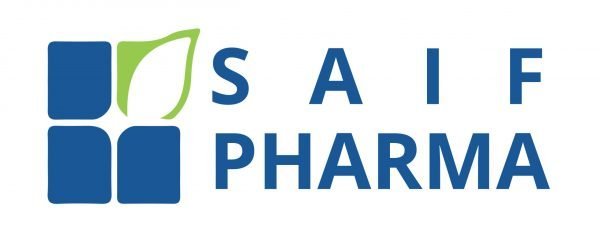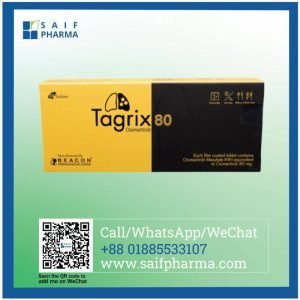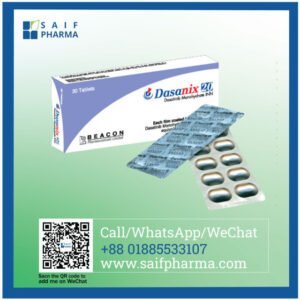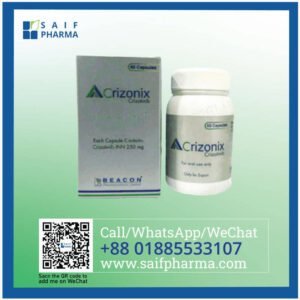Suggestions
recently diagnosed adult and pediatric cases with Philadelphia chromosome-positive habitual myeloid leukemia( Ph CML) in the habitual phase.
Cases with Philadelphia chromosome-positive habitual myeloid leukemia in blast extremity, accelerated phase, or in habitual phase after failure of interferon- nascence remedy.
Adult cases with regressed or refractory Philadelphia chromosome-positive acute lymphoblastic leukemia( Ph each).
Pediatric cases with recently diagnosed Philadelphia chromosome-positive acute lymphoblastic leukemia( Ph each) in combination with chemotherapy
Adult cases with myelodysplastic/ myeloproliferative conditions associated with platelet-deduced growth factor receptor( PDGFR) genere-arrangements.
Adult cases with aggressive systemic mastocytosis without the D816V c- tackle mutation or with c- tackle mutational status are unknown.
Adult cases with hypereosinophilic pattern and/ or habitual eosinophilic leukemia who have the FIP1L1- PDGFR an emulsion kinase( mutational analysis or luminescence in situ hybridization( FISH) demonstration of CHIC2 allele omission) and for cases with HES and/ or CEL who are FIP1L1- PDGFRa emulsion kinase negative or unknown.
Adult cases with unresectable, intermittent, and/ or metastatic dermatofibrosarcoma protuberans.
Cases with tackle( CD117) positive unresectable and/ or metastatic nasty gastrointestinal stromal excrescences.
Adjuvant treatment of adult cases following complete gross resection of tackle( CD117) positive GIST.
Pharmacology
Imatinib is a small patch protein- tyrosine kinase asset that potently inhibits the exertion of the Bcr- Abl tyrosine kinase( TK), as well as several receptor TKs, tackle, the receptor for stem cell factor( SCF) enciphered for by the c- tackle proto-oncogene, the discoidin sphere receptors( DDR1 and DDR2), the colony-stimulating factor receptor( CSF- 1R) and the platelet- deduced growth factor receptors nascence and beta( PDGFR- nascence and PDGFR beta). Imatinib can also inhibit cellular events intermediated by activation of these receptor kinases.
immersion and Distribution Imatinib is well absorbed after oral administration with Cmax achieved within 2 4 hours post-dose. The mean absolute bioavailability is 98. Mean Imatinib AUC increases proportionally with adding boluses ranging from 25 mg to mg. There’s no significant change in the pharmacokinetics of Imatinib on repeated dosing, and accumulation is1.5- to2.5- pack at a steady state when Imatinib is cured formerly daily. At clinically applicable attention of Imatinib, binding to tube proteins in vitro trials is roughly 95, substantially to albumin and 1- acid glycoprotein.
Metabolism CYP3A4 is the major enzyme responsible for the metabolism of Imatinib. Other cytochrome P450 enzymes, similar to CYP1A2, CYP2D6, CYP2C9, and CYP2C19, play a minor part in its metabolism. The main circulating active metabolite in humans is the N- demethylated piperazine outgrowth, formed generally by CYP3A4. It shows in vitro energy analogous to the parent Imatinib. The tube AUC for this metabolite is about 15 of the AUC for Imatinib. The tube protein list of N- demethylated metabolite CGP74588 is analogous to that of the parent emulsion.
Excretion Imatinib elimination is predominately in the feces, substantially as metabolites. Grounded on the recovery of emulsion( s) after an oral 14C- the labeled cure of Imatinib, roughly 81 of the cure was excluded within 7 days, in feces( 68 of cure) and urine( 13 of cure). Unchanged Imatinib reckoned for 25 of the cure( 5 urine, 20 feces), the remainder being metabolites. Following oral administration in healthy levies, the elimination half-lives of Imatinib and its major active metabolite, the N- dimethyl outgrowth( CGP74588), are roughly 18 and 40 hours, independently.
Lozenge & Administration
Grown-ups with Ph CML CP 400 mg/ day
Grown-ups with Ph CML AP or BC 600 mg/ day
Pediatrics with Ph CML CP 340 mg/ m2/ day
Grown-ups with Ph ALL 600 mg/ day
Pediatrics with Ph ALL 340 mg/ m2/ day
Grown-ups with MDS/ MPD 400 mg/ day
Grown-ups with ASM 100 mg/ day or 400 mg/ day
Grown-ups with HES/ CEL 100 mg/ day or 400 mg/ day
Grown-ups with DFSP 800 mg/ day
Grown-ups with metastatic and/ or unresectable GIST 400 mg/ day
Adjuvant treatment of grown-ups with GIST 400 mg/ day
Cases with mild to moderate hepatic impairment 400 mg/ day
Cases with severe hepatic impairment 300 mg/ day
All boluses of Imatinib should be taken with a mess and a large glass of water. Boluses of 400 mg or 600 mg should be administered formerly daily, whereas a cure of 800 mg should be administered as 400 mg twice a day. Imatinib can be dissolved in water or apple juice for cases having difficulty swallowing. diurnal dosing of 800 mg and over should be fulfilled using the 400- mg tablet to reduce exposure to iron.
Interaction
Agents converting CYP3A Metabolism attendant administration of Imatinib and strong CYP3A4 corrupters may reduce total exposure of imatinib; consider indispensable agents.
Agents Inhibiting CYP3A Metabolism attendant administration of Imatinib and strong CYP3A4 impediments may affect a significant imatinib exposure increase. Grapefruit juice may also increase tube attention of imatinib; avoid grapefruit juice).
relations with medicines Metabolized by CYP3A4 Imatinib will increase tube attention of CYP3A4 metabolized medicines(e.g., triazole- benzodiazepines, dihydropyridine calcium channel blockers, certain HMG- CoA reductase impediments, etc.). Use caution when administering Imatinib with CYP3A4 substrates that have a narrow remedial window. Because warfarin is metabolized by CYP2C9 and CYP3A4, use low-molecular-weight or standard heparin rather than warfarin in cases that bear anticoagulation.
relations with medicines Metabolized by CYP2D6 Use caution when administering Imatinib with CYP2D6 substrates that have a narrow remedial window.
Side goods
The following serious adverse responses are described away in the labeling
Fluid Retention and Edema
Hematologic Toxicity
Congestive Heart Failure and Left Ventricular Dysfunction
Hepatotoxicity
Hemorrhage
Gastrointestinal diseases
Hypereosinophilic Cardiac toxin
Dermatologic venom
Hypothyroidism
Growth deceleration in Children and Adolescents
Excrescence Lysis Pattern
Impairments Related to Driving and Using Machinery
Renal toxin
gestation & Lactation
Women of travail implicit Women of travail eventuality must be advised to use effective contraception during treatment and for at least 15 days after stopping treatment with Imatinib.
gestation There are limited data on the use of imatinib in pregnant women. There have been post-marketing reports of robotic revocations and child natural anomalies from women who have taken Imatinib. Studies in creatures have still shown reproductive toxins and the implicit threat to the fetus is unknown. Imatinib shouldn’t be used during gestation unless easily necessary. However, the case must be informed of the implicit threat to the fetus, If it’s used during gestation.
bone-feeding There’s limited information on imatinib distribution in mortal milk. Studies in two bone-feeding women revealed that both imatinib and its active metabolite can be distributed into mortal milk. The milk tube rate studied in a single case was determined to be0.5 for imatinib and0.9 for the metabolite, suggesting the lesser distribution of the metabolite into the milk. Considering the combined attention of imatinib and the metabolite and the maximum diurnal milk input by babies, the total exposure would be anticipated to be low(- 10 of a remedial cure). still, since the goods of low-cure exposure of the child to imatinib are unknown, women shouldn’t bone-feed during treatment and for at least 15 days after stopping treatment with Imatinib.
Fertility In-clinical studies, the fertility of manly and womanish rats wasn’t affected, although goods on reproductive parameters were observed. Studies on cases entering Imatinib and its effect on fertility and gametogenesis haven’t been performed. Cases concerned about their fertility on Imatinib treatment should consult with their croaker.
preventives & Warnings
Edema and severe fluid retention have passed. Weigh cases regularly and manage unanticipated rapid-fire weight gain by medicine interruption and diuretics.
Cytopenias, particularly anemia, neutropenia, and thrombocytopenia, have passed. Manage with cure reduction, cure interruption, or termination of treatment. Perform complete blood counts daily for the first month, biweekly for the alternate month, and periodically later.
Severe congestive heart failure and left ventricular dysfunction have been reported, particularly in cases with comorbidities and threat factors. Examiner and treat cases with cardiac complaint or threat factors for cardiac failure.
Severe hepatotoxicity, including losses, may do. Assess liver function before the inauguration of treatment and yearly later or as clinically indicated. Examiner liver function when combined with chemotherapy is known to be associated with liver dysfunction.
Grade3/4 hemorrhage has been reported in clinical studies in cases with recently diagnosed CML and with GIST. Gl excrescence spots may be the source of Gl bleeds in GIST. Gastrointestinal( Gl) perforations, some fatal, have been reported.
Cardiogenic shock/ left ventricular dysfunction has been associated with the inauguration of Imatinib in cases with conditions associated with high eosinophil situations(e.g., HES, MDS/ MPD, and ASM).
Bullous dermatologic responses(e.g., erythema multiforme and Stevens-Johnson pattern) have been reported with the use of Imatinib.
Hypothyroidism has been reported in thyroidectomy ZyvaxatX cases witnessing levothyroxine relief. nearly cover TSH situations in similar cases.
Fetal detriment can do this when administered to a pregnant woman. advise women of the implicit detriment to the fetus, and to avoid gestation when taking Imatinib.
Growth deceleration in children and adolescents entering Imatinib has been reported. Close monitoring of growth in children under Imatinib treatment is recommended.
Excrescence Lysis Pattern. Close monitoring is recommended.
Reports of motor vehicle accidents have been entered in cases entering Imatinib. Caution cases about driving an auto or operating ministry.
Renal toxin. A decline in renal function may do in cases entering Imatinib. estimate renal function at birth and during remedy, with attention to threat factors for renal dysfunction.
Overdose goods
Experience with boluses advanced than the recommended remedial cure is limited. In the event of overdose, the case should be observed and an applicable characteristic treatment given. Generally, the reported outgrowth in these cases was” bettered” or” recovered“. Events that have been reported at different cure ranges are as follows
Adult Population
1200 to 1600 mg( duration varying between 1 to 10 days) Nausea, puking, diarrhea, rash, erythema, edema, swelling, fatigue, muscle spasms, thrombocytopenia, pancytopenia, abdominal pain, headache, dropped appetite.
1800 to 3200 mg( as high as 3200 mg daily for 6 days) Weakness, myalgia, increased creatine phosphokinase,
increased bilirubin, gastrointestinal pain.
6400 mg( single cure) One case reported in the literature of one case who endured nausea, puking, abdominal pain, pyrexia, facial lump, dropped neutrophil count and increased transaminases.
8 to 10 g( single cure) Vomiting and gastrointestinal pain have been reported.
Pediatric population One 3- time–old manly exposed to a single cure of 400 mg educated vomiting, diarrhea, and anorexia, and another 3- time–old manly exposed to a single cure of 980 mg endured dropped white blood cell count and diarrhea. In the event of overdose, the case should be the observed and applicable probative treatment given.
remedial Class
Targeted Cancer remedy, Tyrosine Kinase Asset
Storage Conditions
Store below 30 °C, in a cool and dry place. Keep down from light. Keep out of the reach of children.







